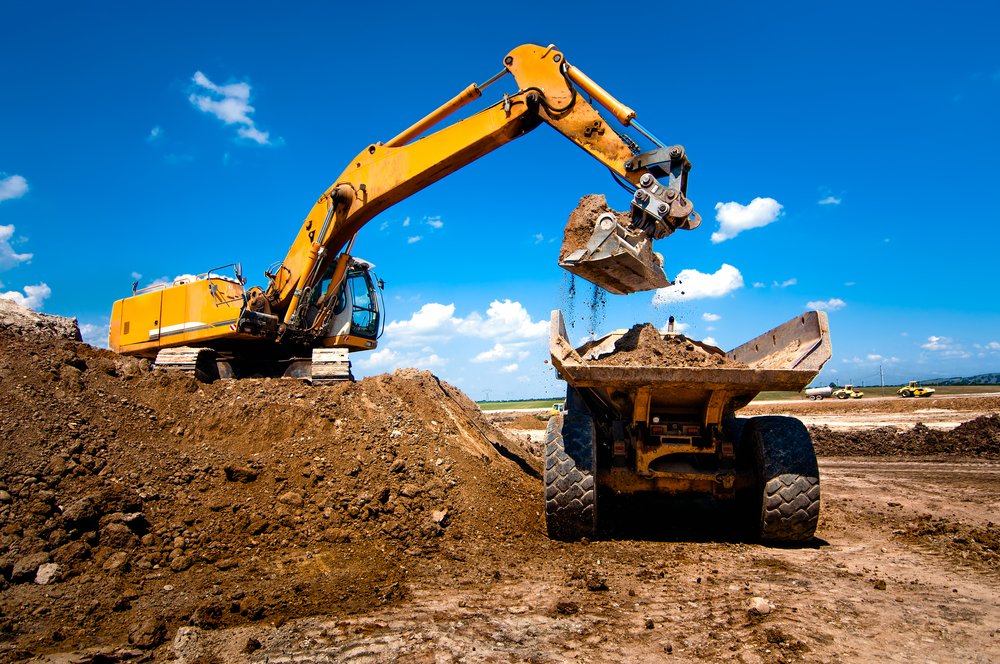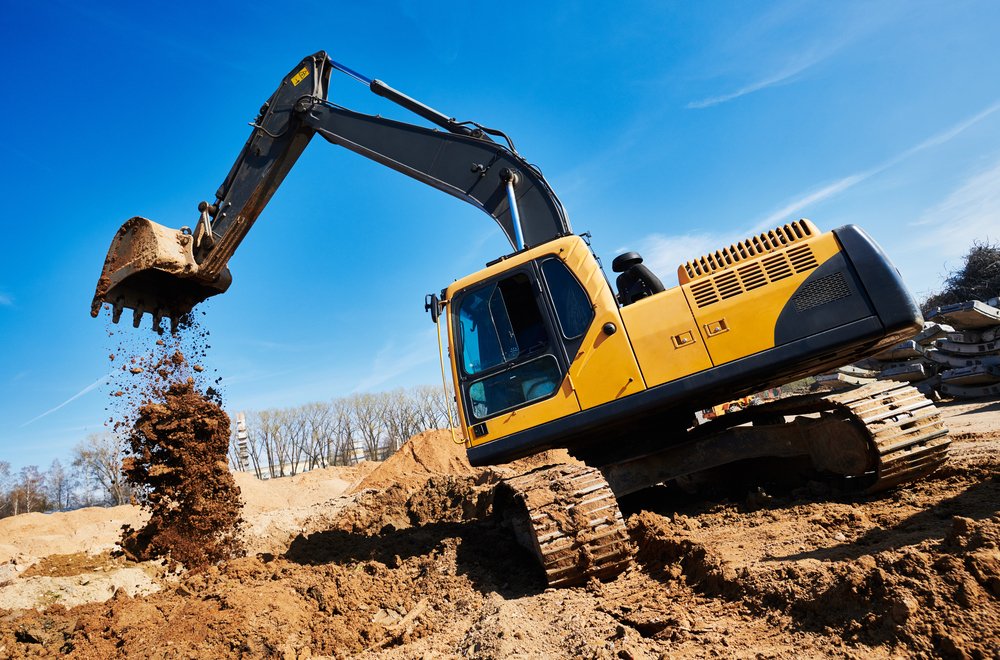Many property owners receive excavation quotes that leave them questioning the fairness of pricing. Our research shows that understanding excavation costs remains a challenge, which often results in budget overruns and project delays. It’s helpful to be able to calculate the volume of excavated materials in order to estimate the cost of a project and determine if the materials need to be trucked off.
Dig into Savings: Excavation Cost Calculator
Small backyard projects and large commercial developments require accurate cost calculations. The process involves understanding excavation costs per cubic yard and using specialized calculators to create precise project estimates.
This piece breaks down everything in excavation costs and offers practical tools for accurate project expense calculations. You’ll discover the factors that influence pricing, learn measurement techniques, and understand how to avoid common estimation mistakes.
Understanding Basic Excavation Cost Components
Your excavation costs depend on several core components. A clear understanding of these elements will help you build more accurate project budgets.
Labor and equipment rates
Labor and equipment make up the biggest part of your excavation expenses. You can expect to pay $120 to $150 per hour for excavation labor. Equipment costs with an operator range $100 to $300 per hour, based on machine size and how complex the project is.
Several factors affect your equipment and labor costs:
- Project size and accessibility
- Type of machinery required
- Operator expertise
- Fuel and maintenance costs
- Duration of the project
Material removal costs
The cost of hauling away excavated material can substantially affect your budget. Material removal costs range between $8 to $25 per cubic yard. These costs change based on:
Complete excavation services for residential projects cost between $50 to $200 per cubic yard. Site accessibility and distance to disposal locations heavily influence the total cost.
Permit and survey expenses
Permits and surveys are required before excavation work begins. Standard excavation permits cost between $50 to $400. Land surveys, which most projects need, cost between $400 to $550.
Your project scope might require additional testing. A soil test costs between $700 to $2,200. These tests identify potential challenges and ensure you meet local regulations.
Note that your location and project size affect permit costs. Urban areas often need extra permits for traffic management or special engineering reviews. Local authorities can provide specific requirements and associated fees for your project.
Essential Measurements for Cost Calculation
Accurate measurements are the foundations of reliable excavation cost estimates. Let’s look at the calculations you need for your project.
Calculating cubic yards
Cubic yards are our standard unit of measurement to calculate excavation volumes. One cubic yard equals 27 cubic feet. Here’s a proven process that gives accurate calculations:
- Measure length, width, and depth in feet
- Multiply these three measurements together
- Divide the result by 27 to convert to cubic yards
- Double-check measurements for accuracy
Breaking the area into smaller, manageable sections works best for irregular shapes. This method helps maintain precision, especially with complex terrain.
Determining depth requirements
Safety regulations play a vital role in determining excavation depth. Trenches 4 feet or deeper need safe access points within 25 feet of lateral travel.
Several factors affect depth requirements:
- Soil classification and stability
- Groundwater conditions
- Proximity to existing structures
- Support system requirements
Excavation near foundations needs special engineering approval or support systems to protect structural stability. This becomes even more important when work happens below adjacent buildings’ base level.
Measuring slope and grade factors
Slope calculations are vital for safety and drainage. Different soil types need specific slope angles to stay stable. We calculate accurate slope measurements using this formula: slope percentage = (rise ÷ run) × 100.
A 2% slope usually works best for proper water drainage. This creates effective water flow while keeping the site stable. Complex terrain requires the grid method – we divide the area into smaller sections and measure elevation points to calculate volumes accurately.
Note that soil weight varies – one cubic foot weighs between 110 to 140 pounds. This helps us choose the right equipment and support systems for your project.

Using Digital Tools for Cost Estimation
Digital technology has changed how we estimate excavation costs. The right digital tools save time, money and make our estimates more accurate.
Online excavation calculators
We rely on online calculators to quickly estimate excavation costs. These tools help us input simple measurements and calculate volumes and costs automatically. A typical calculator processes measurements in cubic yards, feet, or meters to determine total project costs. Simple projects need online calculators that provide original estimates starting from $96.39 to $228.00 per cubic yard.
Project estimation software
Large projects need professional excavation software. We use specialized programs that offer:
- Automatic calculation tools for grading and trench excavation
- Centralized cost databases for materials and labor
- Customizable templates for new estimates
- Immediate project tracking capabilities
HeavyBid and similar professional solutions help us create detailed estimates faster. These platforms handle complex earthwork calculations while staying accurate throughout the project.
Mobile apps for measurements
Mobile measurement apps have improved our daily operations’ efficiency. Modern apps like Moasure let us:
Calculate earthwork volumes and site grades by walking the site. The app processes cut-and-fill ratios and cubic yardage calculations automatically. These measurements work well even in tough conditions – the tools resist water and survive 6-foot drops onto concrete.
Our project management apps enable immediate sharing and collaboration. Team members see measurements instantly, whether they’re on the roof or at the cut station across the job site. Cloud connectivity keeps our data backed up and available.
These digital tools help us reduce common estimation errors. Our excavation software has improved calculation accuracy and project planning efficiency. The software blends with other construction management applications to keep information flowing smoothly during project planning and execution.
Step-by-Step Cost Calculation Guide
Our team creates accurate excavation cost estimates through attention to detail and a step-by-step approach. We follow a tested process that gives us precise calculations every time.
Gathering site information
Accurate estimates start with a full site analysis. Our team visits sites to assess key factors that impact excavation costs. During these visits, we document:
- Site drainage conditions
- Access points for equipment
- Utility locations
- Surrounding area constraints
- Local regulations and permit requirements
Soil testing might get pricey at $700 to $2,200, but this investment prevents surprises during excavation.
Applying cost factors
Site information guides our assessment of all cost elements. Equipment rental with an operator runs between $100 to $250 per hour, and labor rates average $120 to $150 per hour.
We break down costs into clear categories. Our process looks at:
- Basic excavation rates ($50 to $200 per cubic yard)
- Material hauling costs ($8 to $25 per cubic yard)
- Equipment and operator fees
- Permit expenses ($50 to $400)
- Survey costs ($400 to $550)
Creating detailed estimates
Systematic organization of estimates improves accuracy. We start with a written outline of all work in sequence. This helps us track each project aspect effectively.
The final estimate needs detailed documentation of calculations and assumptions. Our team’s documentation of soil conditions, weather factors, and equipment availability prevents confusion later.
A contingency budget of 10-20% of the estimated cost works best. This buffer covers unexpected issues that pop up during excavation projects.
Our team reviews all calculations and extensions before finalizing estimates. Another team member verifies the numbers, or we take a fresh look after a few days. This double-check system catches potential errors effectively.
Project documentation, worksheets and calculator printouts are valuable references. These records help manage current projects and improve future estimation accuracy.
Common Calculation Mistakes to Avoid
Our extensive work with excavation contractors has shown how minor calculation errors can lead to major budget overruns. Research shows that 85% of construction projects experience cost overruns. We noticed this happens mostly because of estimation errors and poor team communication.
Overlooking hidden costs
Project managers often miss several hidden costs that can substantially affect their excavation budget. These expenses slip through unnoticed:
- Insurance and bond fees
- Vehicle and equipment maintenance
- Technology and software costs
- Administrative overhead
- Weather-related delays
- Site accessibility challenges
Studies show 35% of construction professionals’ time goes into non-productive activities like managing unexpected changes and fixing administrative errors. Poor project management and communication breakdowns will get pricey and cause delays.
Incorrect measurement conversions
Unit conversion mistakes rank among the most serious errors we see. These errors can devastate a project’s finances. To name just one example, a project lost $327.6 million due to a single unit conversion error.
Here’s the quickest way we prevent conversion errors:
- Use consistent units throughout calculations
- Verify all conversion factors
- Document each conversion step
- Have a second team member verify calculations
Forgetting contingency budgets
Many excavation projects lack adequate contingency funds. Based on our experience and industry standards, we suggest keeping 5% to 10% of the total project cost as contingency. This buffer helps handle unexpected issues like:
- Weather-related delays
- Equipment breakdowns
- Supply chain disruptions
- Unforeseen site conditions
- Labor shortages
Research shows proper contingency planning is vital since projects with inadequate contingency funds often face significant delays and cost overruns. Note that contingency isn’t optional – it protects against unexpected challenges that pop up during excavation work.
We keep contingency funds as a separate budget line item. This prevents the contingency from mixing with general expenses and keeps it available for real emergencies. Projects with well-managed contingency funds are more likely to stay within budget and meet deadlines.
These funds should cover only genuine unforeseen expenses. We track all contingency usage meticulously, noting specific reasons and costs. This documentation helps refine future project estimates and keeps all stakeholders informed.
Conclusion
Calculating excavation costs might seem daunting at first, but our detailed approach makes it manageable and precise. A proper understanding of cost components, careful measurements, and smart use of digital tools has helped countless projects stay within budget and avoid getting pricey surprises.
Successful excavation projects rely on detailed planning and attention to detail. Labor rates, equipment costs, and material removal create the bulk of expenses, while permit fees and contingency budgets are equally crucial to your final calculations. Projects that use our systematic approach typically face fewer delays and budget overruns.
Smart cost calculation benefits every phase of your project. These estimation techniques will help you create realistic budgets and maintain better control over costs, whether you’re planning a small residential dig or a large commercial excavation. Your project’s success depends on documenting calculations carefully and reviewing them regularly – this simple practice saves both time and money.

